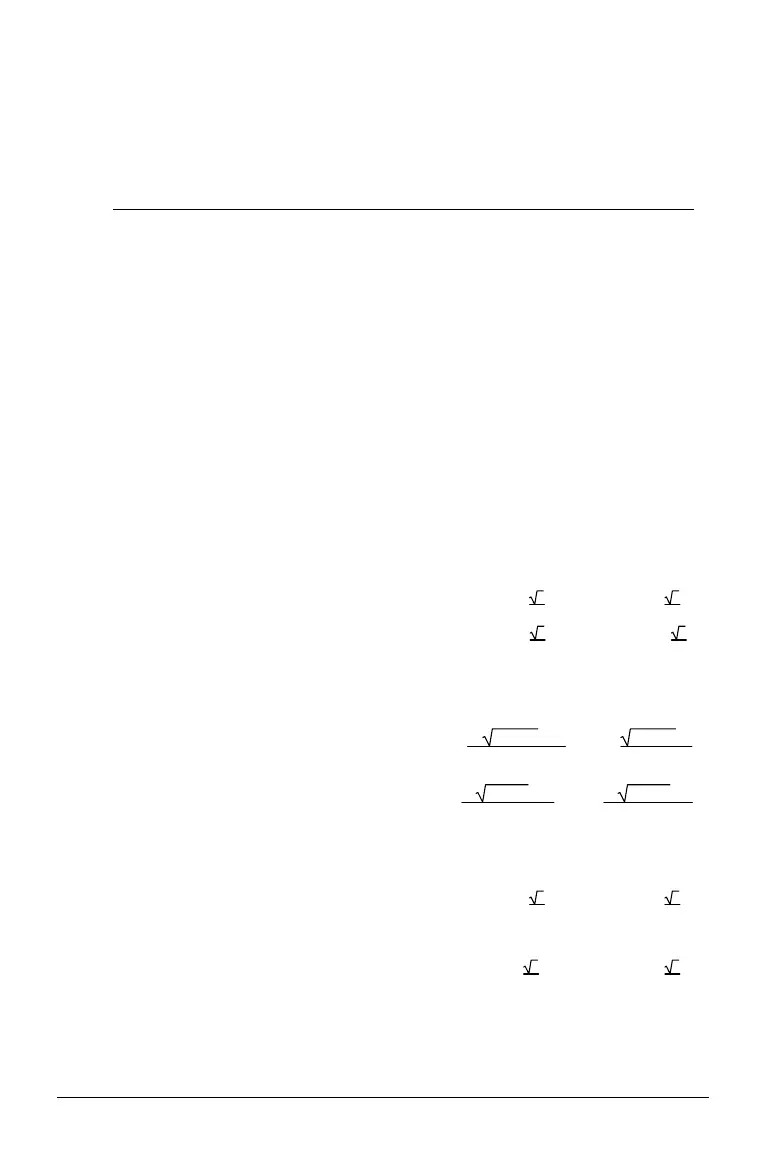Appendix A: Functions and Instructions 167
If you use
var
_ , the variable is treated as
complex.
You should also use
var
_ for any other variables
in
equation
that might have unreal values.
Otherwise, you may receive unexpected results.
z is treated as real:
cSolve(conj(z)=1+
i
,z) ¸
z=1+
i
z_ is treated as complex:
cSolve(conj(z_)=1+
i
,z_) ¸
z_=1−
i
cSolve(
equation1
and
equation2
[and
…
],
{
varOrGuess1
,
varOrGuess2
[,
…
]})
⇒
Boolean expression
Returns candidate complex solutions to the
simultaneous algebraic equations, where each
varOrGuess
specifies a variable that you want to
solve for.
Optionally, you can specify an initial guess for a
variable. Each
varOrGuess
must have the form:
variable
– or –
variable
=
real
or
non
-
real
number
For example, x is valid and so is x=3+
i
.
If all of the equations are polynomials and if you
do NOT specify any initial guesses,
cSolve() uses
the lexical Gröbner/Buchberger elimination
method to attempt to determine all complex
solutions.
Note: The following examples use an
underscore _
@ ¥ q
H 2 q so that the variables will be
treated as complex.
Complex solutions can include both real and non-
real solutions, as in the example to the right.
cSolve(u_ù v_ì u_=v_ and
v_^2=ë u_,{u_,v_}) ¸
u_=1/2 +
3
2
ø
i
and v_=1/2 ì
3
2
ø
i
or u_=1/2 ì
3
2
ø
i
and v_=1/2 +
3
2
ø
i
or u_=0 and v_=0
Simultaneous
polynomial
equations can have
extra variables that have no values, but represent
given numeric values that could be substituted
later.
cSolve(u_ù v_ì u_=c_ù v_ and
v_^2=ë u_,{u_,v_}) ¸
u_=
ë(
1ì4øc_+1)
2
4
and v_=
1ì4øc_+1
2
or
u_=
ë(
1ì4øc_ì1)
2
4
and v_=
ë(
1ì4øc_ì1)
2
or u_=0 and v_=0
You can also include solution variables that do
not appear in the equations. These solutions
show how families of solutions might contain
arbitrary constants of the form @
k
, where
k
is an
integer suffix from 1 through 255. The suffix
resets to 1 when you use
ClrHome or ƒ
8:Clear Home.
For polynomial systems, computation time or
memory exhaustion may depend strongly on the
order in which you list solution variables. If your
initial choice exhausts memory or your patience,
try rearranging the variables in the equations
and/or
varOrGuess
list.
cSolve(u_ù v_ì u_=v_ and
v_^2=ë u_,{u_,v_,w_}) ¸
u_=1/2 +
3
2
ø
i
and v_=1/2 ì
3
2
ø
i
and w_=@1
or
u_=1/2 ì
3
2
ø
i
and v_=1/2 +
3
2
ø
i
and w_=@1
or u_=0 and v_=0 and w_=@1

